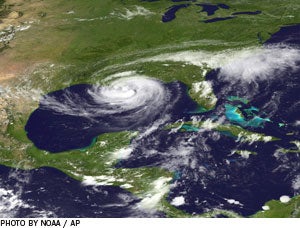Hurricane-ready hospitals weather a tough test
 For all the death and destruction delivered by Hurricane Katrina in 2005, it also taught hospitals in New Orleans and the Gulf region a valuable lesson: Be prepared for the worst.
For all the death and destruction delivered by Hurricane Katrina in 2005, it also taught hospitals in New Orleans and the Gulf region a valuable lesson: Be prepared for the worst.
While Isaac was only a Category 1 hurricane, the 80-mph sustained winds and up to 20 inches of rain in some areas served as a powerful test of hospitals' preparedness in the post-Katrina era. For the most part, hospitals contacted by Health Facilities Management survived Isaac in excellent shape.
While power was down in most of the New Orleans area during Isaac and the days following, hospitals either maintained power throughout the hurricane or lost nonemergency power for only a short time.
Norris Yarbrough, LEM, CEM, assistant vice president, emergency preparedness and response, Ochsner Health System, New Orleans, says Ochsner took several steps to improve its emergency preparedness after it experienced problems similar to those of other hospitals during Katrina.
In the 2005 hurricane, Ochsner lost air conditioning in parts of its facilities because of damaged generators, experienced smashed windows because gravel on roofs turned into projectiles and failed to get emergency fuel deliveries that were diverted elsewhere.
Yarbrough says Ochsner has acquired additional power generators that are secured on 18-wheel flat bed trailers to move to any site within the health care system when needed. Ochsner also has an agreement with fuel suppliers to have trucks strategically positioned in case of an emergency. Gravel roofs were replaced with solid-membrane systems.
While Ochsner's facilities did not flood during Katrina, many other hospitals in the region did. To be ready, it developed and equipped a special waterborne rescue fleet complete with 10 specially designed boats and two high-water vehicles for evacuating both nonambulatory and ambulatory patients, he says.
The preparation paid off — patient care was never disrupted during Isaac. "Challenges presented during and after the storm were handled as designed by Ochsner's robust emergency preparedness philosophy that is practiced year-round, not just during storm season," he says.
The 247-bed Children's Hospital in New Orleans made it through Isaac "perfectly fine" thanks to backup generators and other action taken to keep the hospital running properly, says Chris Price, communications manager.
After Katrina, the hospital's water-cooled air conditioning system went down for about a month when it lost connection to the city's water supply, says Price. To prevent a recurrence, the hospital dug a well that connects to the nearby Mississippi River and pumps water to the air conditioning system, he says. It also built a helipad on the roof so children in Louisiana and the Gulf region who need service from its neonatal, pediatric or cardiac intensive care units still can be delivered to the hospital.
East Jefferson General Hospital, Metairie, La., which includes several facilities encompassing 3 million square feet, experienced the same power shortages and window damage as Ochsner did during Katrina. It barely dodged flooding that crept to within a foot of the hospital.
Bub Millet, director of facility services and property management, says his hospital took several steps after Katrina to eliminate or at least minimize the risk of system failure or building damage.
Backup generator power was beefed up by purchasing an additional 2-megawatt unit and all generators were relocated to a plant built several feet above street level to avoid the potential of flooding. The hospital keeps 50,000 gallons of generator diesel fuel on-site — a fivefold increase from its reserves during Katrina.
The roof was replaced with a membrane system that is screwed down to eliminate the risk of windows being smashed by flying gravel. All windows are covered with hurricane-strength screens.




